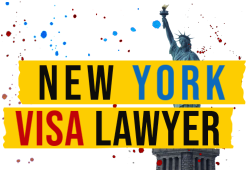Immigration Law Wiki
Hiring A Noncitizen to Work in the U.S.
Employers sometimes need to hire foreign labor when there is a shortage of available U.S. workers to fill certain jobs. Under certain conditions, U.S. immigration law may allow a U.S. employer to file a Form I-129, Petition for a Nonimmigrant Worker, with U.S. Citizenship and Immigration Services (USCIS) on behalf of a prospective foreign national employee. Upon approval of the petition, the prospective employee may apply for admission to the United States, or for a change of nonimmigrant status while in the United States, to temporarily work or to receive training.
For most employment-based nonimmigrant visa categories, the employer starts the process by filing Form I-129 with USCIS. Filing instructions and forms are available on the USCIS web site at www.uscis.gov. Please note that in some cases the employer must file a Labor Condition Application or Application for Temporary Employment Certification with the Department of Labor (DOL) and/or obtain certain consultation reports from labor organizations before filing a petition with USCIS.
What are the various types of visa classifications under which a foreign national may temporarily engage in employment or training?
The following are the most common visa classifications under which a foreign national may temporarily work or train:
- E-1 – Treaty traders and their spouses
- E-2 – Treaty investors and their spouses
- E-3 – Australian specialty occupation workers and their spouses
- H-1B – Specialty occupations in field requiring highly specialized knowledge, fashion models of distinguished merit and ability, or certain services of an exceptional nature in Department of
Defense cooperative research and development projects or co-production projects. - H-1B1 – Specialty occupations for certain nationals of Singapore and Chile
- H-2A – Temporary agricultural workers
- H-2B – Temporary workers performing other services or labor, skilled or unskilled
- H-3 – Trainees or special education exchange visitors
- I – Representatives of information media
- J-1 – Certain exchange visitors
- L-1A – Intra-company transferees (executives, managers)
- L-1B – Intra-company transferees (employees with specialized knowledge)
- O-1 – Foreign nationals who have extraordinary ability in the
- sciences, arts, education, business, or athletics
- O-2 – Essential support personnel for O-1
- P-1 – Internationally recognized athletes (or athletic team) or members of an entertainment group and certain other athletes and entertainers
- P-2 – Artists or entertainers under a reciprocal exchange program
- P-3 – Foreign nationals who perform, teach, or coach under a program that is culturally unique
- P-4 – Essential support personnel for P-1, P-2, and P-3
- Q-1 – International cultural exchange visitors
- R-1 – Religious workers
- TN – Canadian or Mexican professionals covered by the North American Free Trade Agreement (NAFTA).
Am I required to file an application or other request with the U.S. Department of Labor for each foreign national employee?
Certification from the Department of Labor (DOL) is required only for the H-1B, H-2A, and H-2B nonimmigrant classifications. You must first request certification from DOL before submitting your I-129 petition to USCIS. For H-1B nonimmigrants, a Labor Condition Application, and for H-2A and H-2B nonimmigrants, an Application for Temporary Employment Certification must be filed in accordance with DOL instructions. For filing instructions and other information, please see the DOL Web site at www.
foreignlaborcert.doleta.gov. DOL certification is not required for the other nonimmigrant, employment-based, or investor-based visa classifications previously listed.
What happens after I file a Form I-129, Petition for a
Nonimmigrant Worker?
After you file, we will send you a receipt so you know that we have
received your petition. If your petition is incomplete, we may have to
reject it and return your fee,
or ask you for more evidence or information, which will delay
processing. We will notify you when we make a decision. If the
prospective employee is in the United States in a valid nonimmigrant
status, he or she can begin working for the employer upon approval
of the Form I-129 petition, provided that:
- The Form I-129 contained a change of status or extension of stay request that was also approved; or
- In cases where a Form I-539, Application to Extend/Change Nonimmigrant Status, is required, the foreign national has filed and obtained approval of the application for change of status or extension of stay.
How can an employee extend his or her status if it is about
to expire?
If it appears that an employee may be needed longer than the period for which he or she was approved in his or her current nonimmigrant status, an employer may be able to file a new Form I-129 petition
on behalf of the employee. To avoid disruption of authorized employment, employers are encouraged to file a petition to extend the employee’s status well before it expires. Note, however, that if the employee has already stayed for the maximum allowable period of time, an extension may not be granted.
If I filed for an extension of status for my employee, but
have not received a decision by the time his or her status
expires, can I continue to employ the individual?
If:
- USCIS receives a Form I-129 petition to extend an employee’s status before his or her status expires; and
- The employee has not violated the terms of his or her status; and
- The employee meets the basic eligibility requirements.
Then:
The employee may continue to be lawfully employed for a period of up to 240 days, or until USCIS makes a decision on your application, or until the reason for your requested extension has been accomplished—whichever comes first. (Note: Under section 105 of the American Competitiveness
in the Twenty-First Century Act, this does not apply to H-1B portability—the ability to work for
a new employer. H-1B portability is discussed in further detail below.
